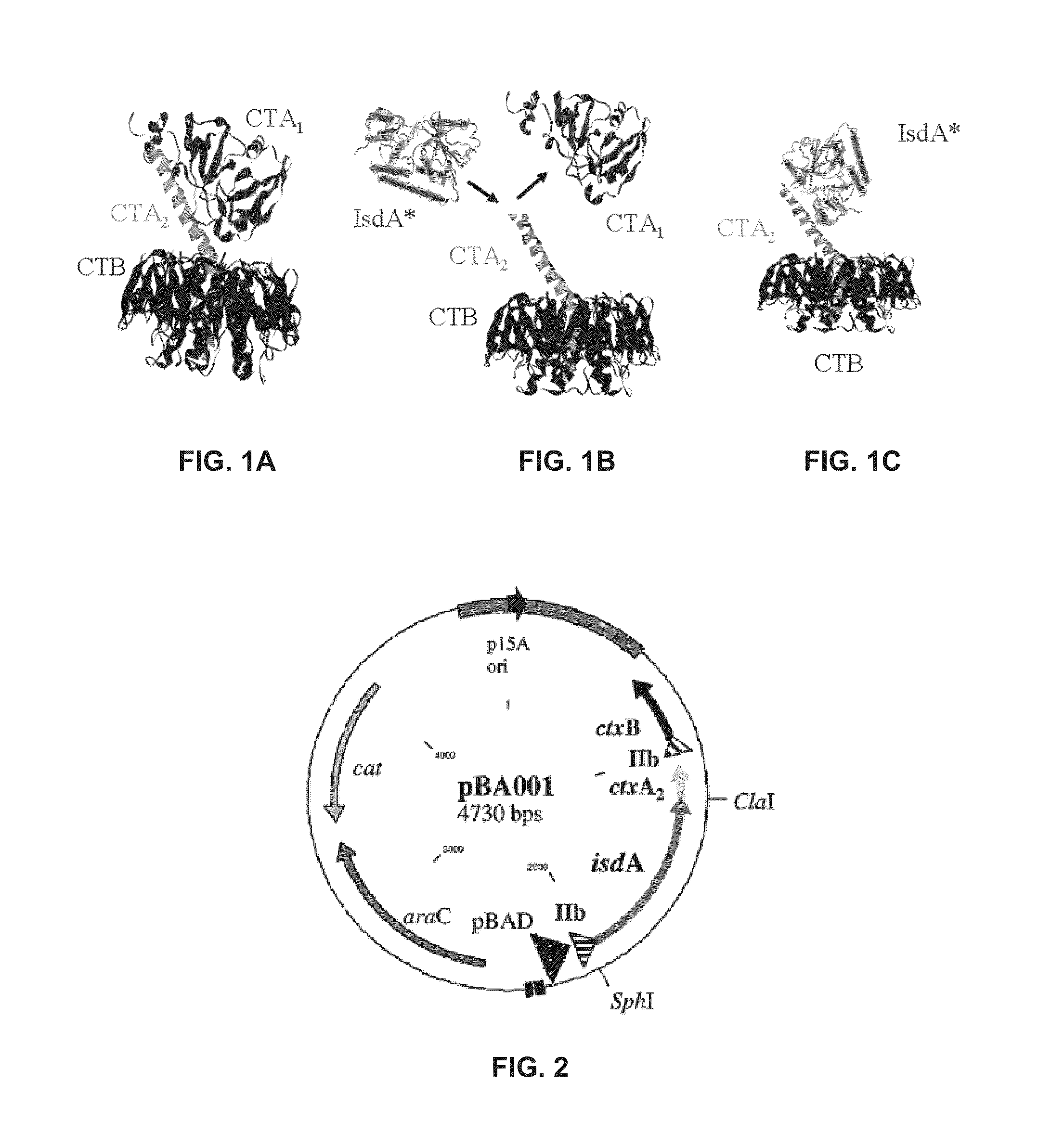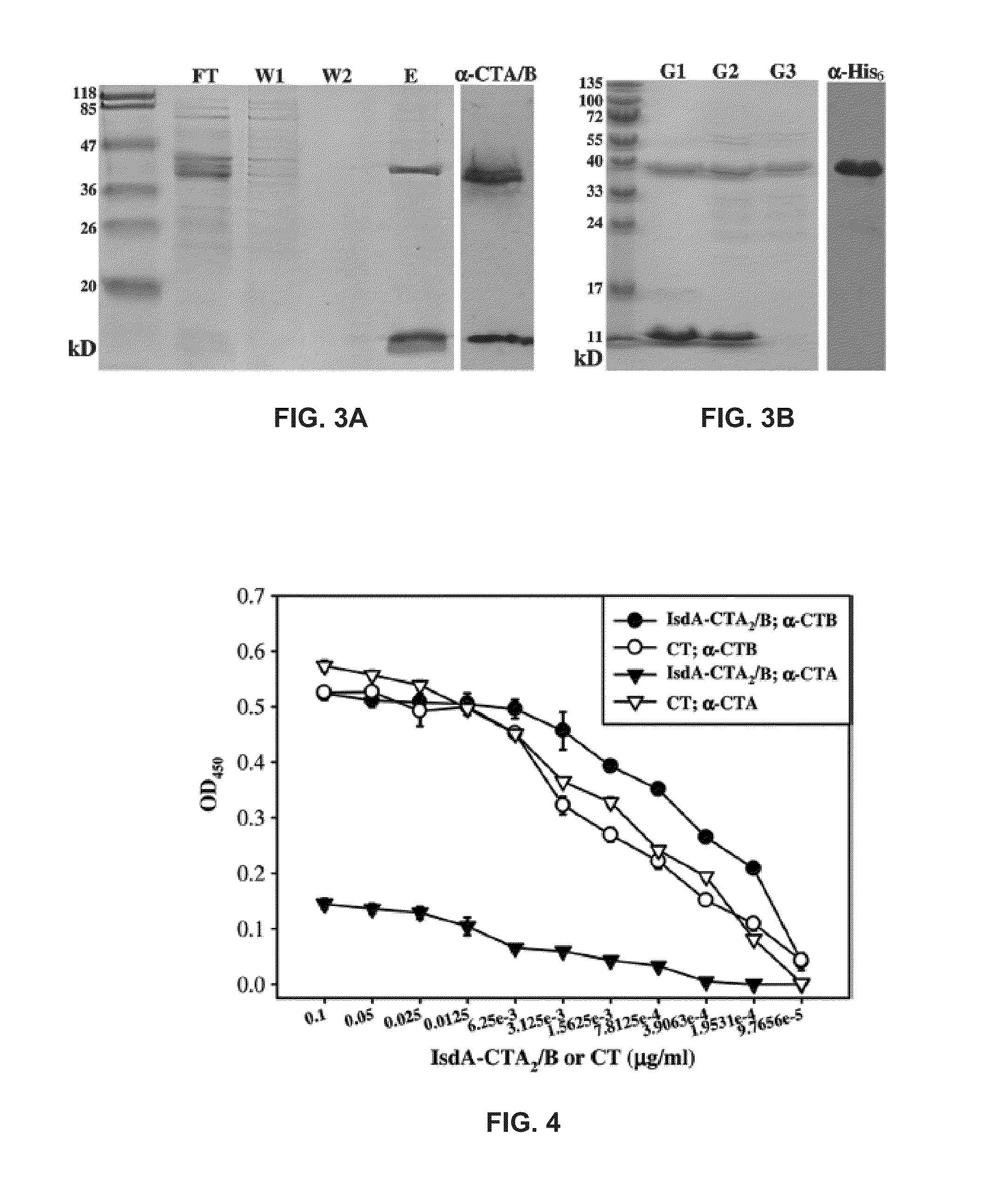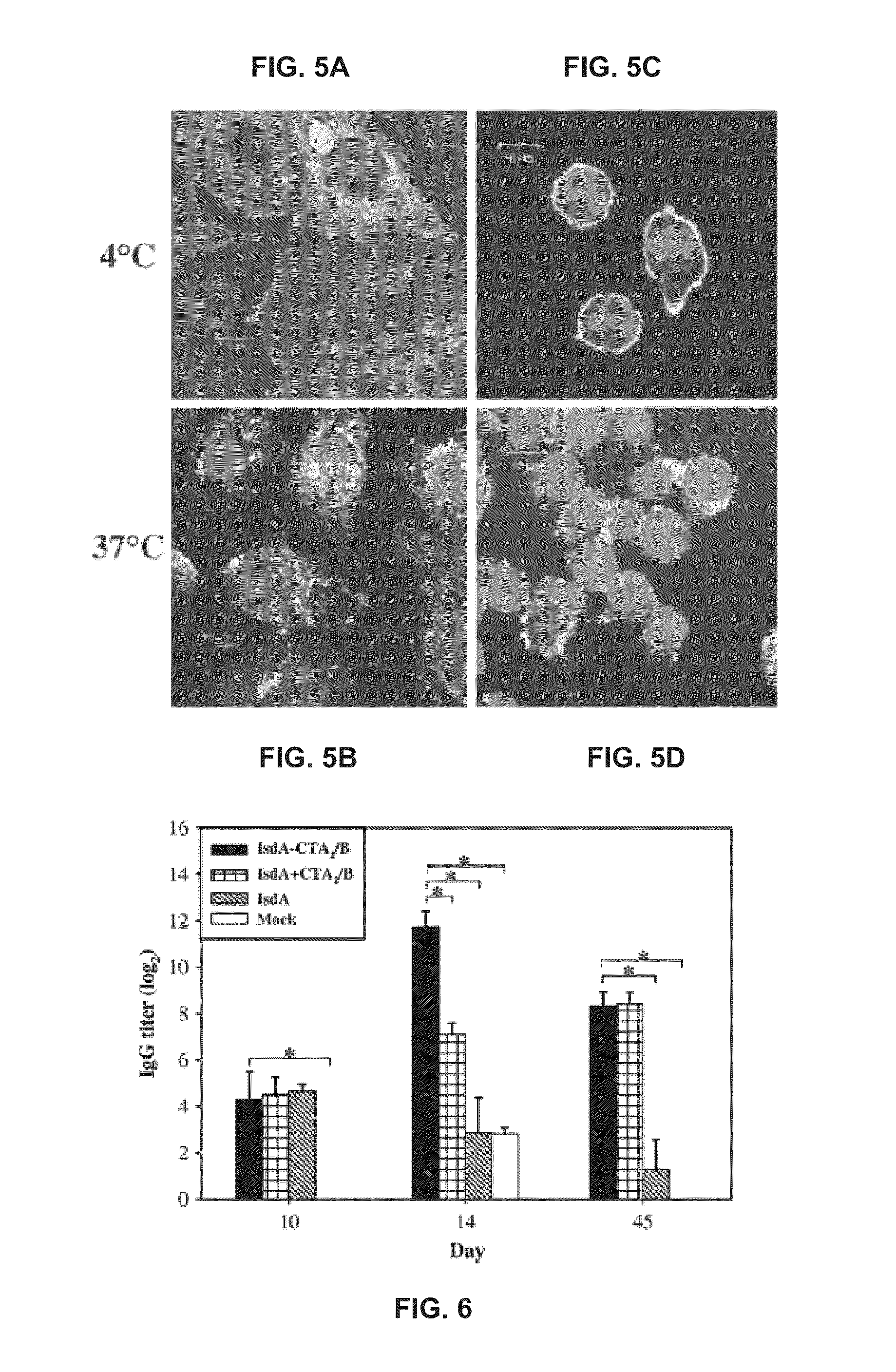Cholera Toxin Chimera and its Use as a Staph Vaccine
a technology of cholera toxin and chimera, which is applied in the field of chimeric protein vaccines, can solve the problems of mastitis, mastitis may cost the dairy industry billions of dollars per year in economic losses, and the cow is being culled from the herd
- Summary
- Abstract
- Description
- Claims
- Application Information
AI Technical Summary
Benefits of technology
Problems solved by technology
Method used
Image
Examples
example 1
[0067]To direct the IsdA-CTA2 and CTB peptides of the chimera to the E. coli periplasm for proper assembly, pBA001 (FIG. 2) was constructed from pARLDR19, which utilizes the E. coli LTIIb N-terminal leader sequence. Induction of pBA001 and purification from the periplasm of E. coli resulted in efficient IsdA-CTA2 / B production (3 to 4 mg from 1 liter of starting culture). SDS-PAGE analysis of the purification of IsdA-CTA2 / B and immunoblotting using antibodies against CTA and CTB (FIG. 3A) confirm that IsdA-CTA2 (˜38 kDa) was copurified with CTB (˜11 kDa) on D-galactose agarose, which is indicative of proper chimera folding. Referring to FIG. 3A, the SDS-PAGE analysis shows flowthrough (FT), washes (W1 and W2) and elution (E) of IsdA-CTA2 / B from D-galactose affinity purification and anti-CTA / B Western blot of purified IsdA-CTA2 / B (˜38 and 11 kDA).
[0068]IsdA alone was also purified using a six-histidine tag (SEQ ID NO: 26). FIG. 3B shows an SDS-polyacrylamide gel of all resulting prote...
example 2
[0074]To compare the receptor binding affinity of purified IsdA-CTA2 / B chimera with native CT, ganglioside GM1 ELISA assays using anti-CTA and anti-CTB antibodies were performed.
[0075]GM1 enzyme-linked immunosorbent assays (ELISA) were performed by coating microtiter plates with 0.15 μM GM1 for 15 h at 20° C., blocking with 10% bovine serum albumin, and incubating with IsdA-CTA2 / B or CT for 1 h at 37° C. Ganglioside GM1 is found ubiquitously on mammalian cells and acts as the site of binding for both cholera toxin and heat-labile toxin. Plates were washed with PBS-T and incubated with anti-CTA (1:2,000) or anti-CTB (1:5,000) followed by HRP-conjugated anti-rabbit IgG, both for 1 h at 37° C. The reaction was developed with o-phenylenediamine dihydrochloride (A450).
[0076]The ELISA results indicate that the B subunit of IsdA-CTA2 / B has GM1 binding affinity similar to that of CT (FIG. 4). Low anti-CTA response from IsdA-CTA2 / B was an expected result from this fusion that contains only 4...
example 3
[0078]The chimeric proteins were tested for their specific humoral response.
[0079]BALB / c mice were mock immunized or immunized intranasally with IsdA-CTA2 / B, IsdA plus CTA2 / B mixed, or IsdA on day 0 and boosted on day 10 (Table 1 below). FIG. 6 shows systemic antibody response to IsdA-CTA2 / B in vivo. Referring to FIG. 6, sera collected on days 0, 10, 14, and 45 were pooled by treatment group at each time point and tested for recognition of IsdA by IgG ELISA. IsdA-specific serum IgG endpoint titers from mice immunized with IsdA-CTA2 / B were significantly higher than those of mock-immunized mice on day 10, than those of all control groups on day 14, and than those of mice immunized with IsdA alone and mock-immunized mice on day 45. As used herein, “*” denotes statistical significance (P2 / B versus controls. Nasal, intestinal, and vaginal washes were collected on day 45, pooled by treatment group, and tested for recognition of IsdA by IgA ELISA.
[0080]FIG. 7 shows mucosal antibody respons...
PUM
| Property | Measurement | Unit |
|---|---|---|
| Fraction | aaaaa | aaaaa |
| Heat | aaaaa | aaaaa |
Abstract
Description
Claims
Application Information
 Login to View More
Login to View More - R&D
- Intellectual Property
- Life Sciences
- Materials
- Tech Scout
- Unparalleled Data Quality
- Higher Quality Content
- 60% Fewer Hallucinations
Browse by: Latest US Patents, China's latest patents, Technical Efficacy Thesaurus, Application Domain, Technology Topic, Popular Technical Reports.
© 2025 PatSnap. All rights reserved.Legal|Privacy policy|Modern Slavery Act Transparency Statement|Sitemap|About US| Contact US: help@patsnap.com



